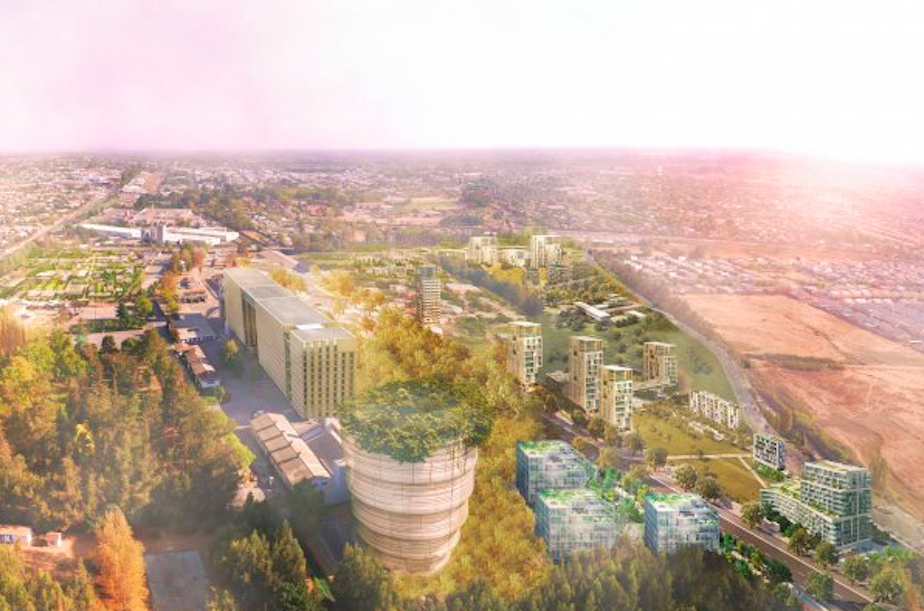RIO DE JANEIRO, BRAZIL – After a long period of total abandonment, the Empresas Iansa land operated as one of the primary plants in the commune of Linares a few years ago will finally have a new use. This is a project to reconvert the 30-hectare industrial land that in August 2018 definitively closed its doors, and now, hand in hand with the architecture, engineering, and construction office, Archmotion, seeks to transform it into a space for citizen convergence.
This is how architect José Miguel Mardones, founder of the firm behind the idea that currently has the sugar mill and the mayor of the city, Mario Meza, working on a project in balance that could solve much of the deficit of housing and green areas in the area, benefiting more than 50 thousand people.
Read also: Check out our coverage on Chile
According to Mardones, who has for many years developed territorial projects in Argentina, Lithuania, and Italy, among other countries, was invited in 2018 by the Federico Santa María University to teach at a Workshop in Linares. The theme focused on the analysis of industrial spaces near urban areas, and from the architectural study, they focused on the case of the Iansa plant.
The 30-hectare industrial land will be transformed into a space for citizen convergence (Photo internet reproduction)However, then company announced the cessation of its operations in that place, and hundreds of people were left unemployed. Following a publication by Archmotion in the local newspaper El Centro, in which they addressed the Iansa situation, the company contacted the firm and expressed its openness to accept the proposal presented.
“What we did was bring together two previously very distant actors, Iansa and the municipality,” says the architect.
THE PROJECT
The proposal focuses on “urban renewal, with changes to the area’s regulatory plan to allow the installation of housing and commerce in a place that was previously used only for industrial purposes. And that allows Iansa to improve sales conditions and open it up to other potential buyers,” explains Mardones.
Although the company initially tried to sell the entire site, the social outbreak and the pandemic hindered this process.
“At that time Iansa was selling the land, but they did not have many offers because the urban conditions of the land were particular. It was industrial, and the municipality was opposing the salw. At that time there was a power struggle between the two, and we were able to accommodate it from the urban planning point of view,” he says.
Thus, after holding conversations with the municipality and the sugar mill, it was finally agreed to carry out the reconversion project. The municipality “reserved” an 8-hectare plot of land for a park that already has soccer fields and dozens of trees. Thus, the land currently has 22 hectares, that is to say, between 6 and 7 lots available for its use, which after a subdivision process, will have to be re-appraised.
“We presented a proposal for urban renewal of balanced development. This idea is based on having mixed uses of equipment, commerce, and housing that are in line with the growth of Linares and on a vacant site. In addition, a piece of land is reserved that corresponds to a park and green areas, and this is very attractive for someone who buys. People could live next to an 8-hectare park,” explains the professional.
Thus, this project could become a solution to the commune’s 2,670-dwelling housing deficit. “This is the largest urban renewal in Chile that surpasses, for example, Las Salinas in Viña del Mar, since it is only half of it (16 hectares)”, mentions Mardones.
He adds that “when one proposes a balanced growth, one has to place commerce, education, science and housing” so as to configure these variables, define certain densities and establish limits. “It has to be attractive to the investor, but it cannot affect what is nearby,” he says.
Currently, the project is practically underway. The mayor of Linares announced his intention to make changes to the regulatory plan, in addition to drawing up a sectional plan that updates the regulatory plan. For its part, the company expects to submit the subdivision proposal soon.
In addition, within the next few weeks, transportation and urbanization studies, a strategic environmental assessment that defines the best possibilities for developing this renovation, and an ordinance that defines the program of this sector, what it can and cannot do (educational, cultural, scientific and housing purposes), should be carried out.
“This urban renewal project scratches the surface. It says ‘this is the balance that the city deserves’, then we can become attractive mill industries, but not burst it, which is what happens in other communes”, concludes Mardones.


